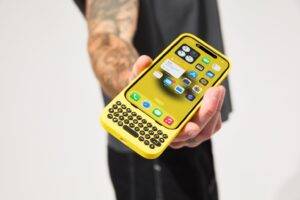More than 100,000 people are expected to see the new TVs, computers and home appliances on display throughout this week unveiled by the likes of Samsung, LG, Panasonic and Sony at the annual CES show in Las Vegas, as well as the latest car technology at a growing automotive show.
Hype for AI is on full display with many products being promoted on the back of their machine-learning capabilities.
Samsung has announced the development of the first robot that can vacuum, mop and steam clean in a single device.
The Bespoke Jet Bot Combo uses AI to detect a stain, go back to its station to heat mop pads and return to the area to steam clean. It also uses AI to map your home and identify your floor material and even give itself a clean at the end of the cycle.
None of this comes cheap. The South Korean company’s previous AI vacuum was priced at $1,300. Help with those hard-to-clean places is also on hand from the US company Kohler, with a remote-controlled bidet seat.
From Silicon Valley comes the Helix by Pivotal, a $190,000 electric one-seater “flying car” that takes off vertically and can fly 20 miles at 60mph without the need for a pilot’s licence in the US. Designed to be flown in uncontrolled airspace away from built-up areas, it is another step towards the Jetsons-like future that has been long promised by the industry, and it will be available in the US from June.
A spokesman for the Civil Aviation Authority said rules for such aircraft were being developed in the Future of Flight programme, but said that “to operate any aircraft in the UK, even privately, requires a pilot’s licence appropriate to the activity carried out”.
Another innovation award winner is the Willcook by Willtex, which is claimed to be the first portable fabric microwave bag. For those who want their lunch on the move, it heats up to 80C in five minutes using smart fibres.
The lightweight fabric, made in Japan, generates heat by drawing power from a rechargeable battery pack using stretchable electric wires and woven conductive fibres, but does not actually use microwaves. Its temperature can be controlled using a smartphone and it can double up as a heated blanket or a cool bag in the summer. It will be launched in the spring for £161.
For home cooking, there is a device designed for the British summer: an indoor smoker that means you can barbeque in the kitchen. The Smart Indoor Smoker by GE Profile uses regular smoking pellets but keeps the smoke inside the appliance through filters and tight gaskets, only letting out warm air. The kitchen-top device is the size of a large microwave and can fit three racks of ribs, a whole brisket or up to 40 chicken wings. Although you may not be choking on smoke, the $1,000 price tag may stick in your throat.
Are you sick of mistyping on your iPhone or frustrated by autocorrect? Do you harbour a longing for the BlackBerry and Palm keyboards of the past? Now you can go retro and convert your Apple into a BlackBerry-style device.
Two influencers have developed a clip-on keyboard to give you that tactile feel while doubling your screen size. Clicks is the brainchild of Michael Fisher and Kevin Michaluk, known as MrMobile and CrackBerry Kevin, two popular tech reviewers with an obsession for buttons and old-school keypads. Fisher says he feels like we have “thrown the buttons out with the bathwater” by turning to touchscreen keypads that take up half of the phone screen.
iPhone users can now turn back the clock by putting their device inside a silicone case that has a 36-button keypad attached. The “creator keyboard” (pictured) is designed to appeal to nostalgics and the new generation of social media users. “Why bring back something so many consider to be obsolete? It comes down to three big things. Space, shortcuts, and sensation,” Fisher says. “The virtual keyboard takes up a ton of screen space. A space that’s hugely valuable if you’re live streaming or spreadsheeting or even typing inside a long message or documents.
“Physical keyboards give you the whole screen to work on so you can consume and create at the same time.” he says. Fisher’s YouTube channel, which has 1.5 million subscribers, features an entire section called “When phones were fun” which pays homage to early handsets from Nokia, Ericsson and Motorola that span the Noughties, all of which have physical keyboards.
The creator keyboard enables desktop shortcuts since you can press more than one button at a time and avoids the “over-reach of autocorrect”. The keyboard was developed by London-based Clicks Technology, co-founded by the duo, which boasts a former BlackBerry designer and Apple veteran among its staff and a CEO and co-founder who developed the F(x) Tec smartphone with a keyboard.
Fisher is honest about the keyboard’s drawbacks. “Clicks makes the iPhone a fair bit bigger … it also takes some getting used to,” he says, explaining it takes two days to become proficient and two weeks for the muscle memory become a rule of thumb. He also promises to address other limitations like the incompatibility with some wireless charging accessories.
Because the case plugs into the charging port, you can not use wired headphones at the same time, but you can still use a charger. It uses between 2 and 4 per cent of battery charge in a day, depending on whether its backlight feature is enabled. Clicks is initially for iPhone only, as Android phones come in numerous shapes and sizes. It costs $139-$159, plus $15 shipping and comes in two colours: BumbleBee (yellow) and London Sky (grey, obviously).
Read more:
International technology conference in Las Vegas unveils gadgets including a BlackBerry-style iPhone keyboard and portable microwave



























